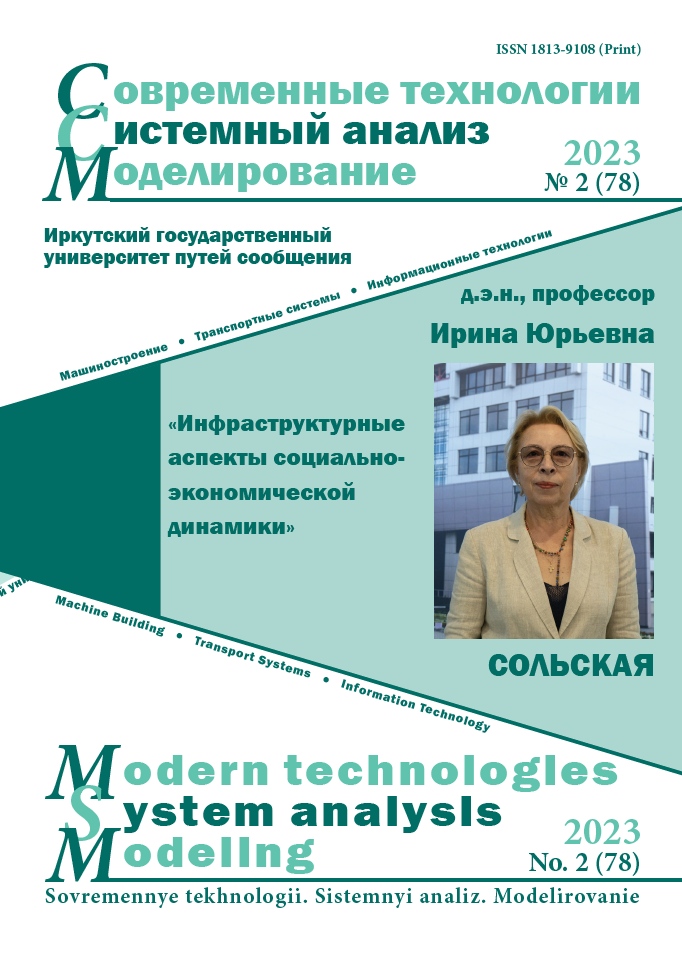Research of the efficiency indicators of railway cargo transportation by probabilistic break-even analysis
Keywords:
cargo transportation, railway transport, performance indicators, probabilistic break-even analysis, Monte Carlo methodAbstract
Algorithmic and software for probabilistic break-even analysis based on the Monte Carlo method for evaluating the efficiency indicators of cargo transportation by rail has been developed. The initial data for calculating these indicators are: cargo transportation; fixed costs; variable costs per unit of cargo transportation; average price of a unit of cargo transportation; the amount of investment. To assess the efficiency of cargo transportation, the following indicators are selected in the article: break-even point, operating profit, investment profitability. A software for probabilistic break–even analysis based on the Monte Carlo method using the Python programming language has been developed. The functionality of the created software is described. In the software, it is possible to test the initial data models, output the test results, as well as the results of processing sample values obtained by the Monte Carlo method. A feature of this study based on a probabilistic break-even analysis is the consideration of the uncertainty of the railway transportation process, which leads to the randomness of the initial data and performance indicators. Testing and approbation of the developed software and algorithmic support was carried out according to one of the railways of JSC «RZD». Given the confidentiality of the initial data, they are presented in conventional units. Software testing showed high quality of initial data simulation by the Monte Carlo method, since all values of mathematical expectations fell within the confidence intervals obtained from sample data. The developed mathematical software based on the Monte Carlo method will improve the quality of managerial decision-making by determining the quantitative values of performance indicators.
References
Бирюзов В.П. Об основных направлениях развития систем диагностики и мониторинга путевого хозяйства до 2025 г. // Путь и путевое хозяйство. 2016. № 4. С. 4–8.
Бугаенко В.М. Мониторинг и диагностика инфраструктуры скоростных мобильных комплексов // Путь и путевое хо-зяйство. 2015. № 4. С. 12–16.
Антипов А.Г., Марков А.А. Новые возможности магнитодинамического метода контроля рельсов // Путь и путевое хо-зяйство. 2016. № 8. С. 27–32.
Ковалев И.А., Колокольников В.С. Влияние отказов технических средств на выполнение графика движения поездов // Транспорт Урала. 2014. № 2 (41). С. 54–57.
Комплексный анализ состояния рельсового пути с помощью нового вагона-дефектоскопа АВИКОН–03М / А.А. Мар-ков, П.Г. Политай, С.П. Маховиков и др. // В мире неразрушающего контроля. 2013. № 3 (61). С. 74–79.
Осьминин А.Т., Мехедов М.И., Медников Д.В. Обеспечение интероперабельности перевозок // Железнодорожный транспорт. 2019. № 7. С. 11–17.
Розенберг Е.Н., Аношкин В.В. Перспективы роста пропускной способности участков // Железнодорожный транспорт. 2020. № 3. С. 4–7.
Сотников Е.А., Мехедов М.И. Холодняк П.С. Интенсификация роста загруженных направлений сети железных дорог // Железнодорожный транспорт. 2020. № 3. С. 11–14.
Попова Н.Н., Краковский Ю.М. Обобщенное прогнозирование показателей грузовых перевозок железнодорожным транспортом на основе сценарного подхода // Вестник РГУПС. 2020. № 3 (79). С. 132–138.
Маловецкая Е.В., Козловский А.П. Анализ моделей и принципов системного моделирования при построении прогноз-ных моделей погрузки грузов // International journal of open information technologies. 2020 Т. 8. № 12. С. 39–48.
Крамынина Г.Н. Разработка многофакторной модели для прогнозирования грузооборота на Восточно-Сибирской же-лезной дороге // Математические методы в технологиях и технике. 2022. № 3. С. 38–41.
Попова Н.Н., Краковский Ю.М. Прогнозирование грузооборота с учетом факторных моделей // Актуальные вопросы аграрной науки. 2019. № 32. С. 63–69.
Краковский Ю.М., Каргапольцев С.К., Начигин В.А. Моделирование перевозочного процесса железнодорожным транспортом: анализ, прогнозирование, риски. СПб. : ЛИТЕО, 2018. 240 с.
Кельтон В.Д., Лоу А.М. Имитационное моделирование. СПб. : Питер : Киев : Изд. группа BHV, 2004. 847 с.
Холлендер М., Вульф Д. Непараметрические методы статистики. М. : Финансы и статистика, 1983. 518 с.
Куликов В.Е. Теоретические проблемы моделирования хозяйственной деятельности сельскохозяйственных предприя-тий в условиях неопределенности // Экономика и управление: проблемы, анализ тенденций и перспектив развития : сб. материалов III Междунар. науч.-практ. конф. Новосибирск, 2018. С. 118–126.
Доусон М. Программируем на Python. СПб. : Питер, 2014. 416 с.
Поляков К.Ю. Программирование. Python. C++. Ч. 1. М. : БИНОМ. Лаборатория знаний, 2019. 144 с.


